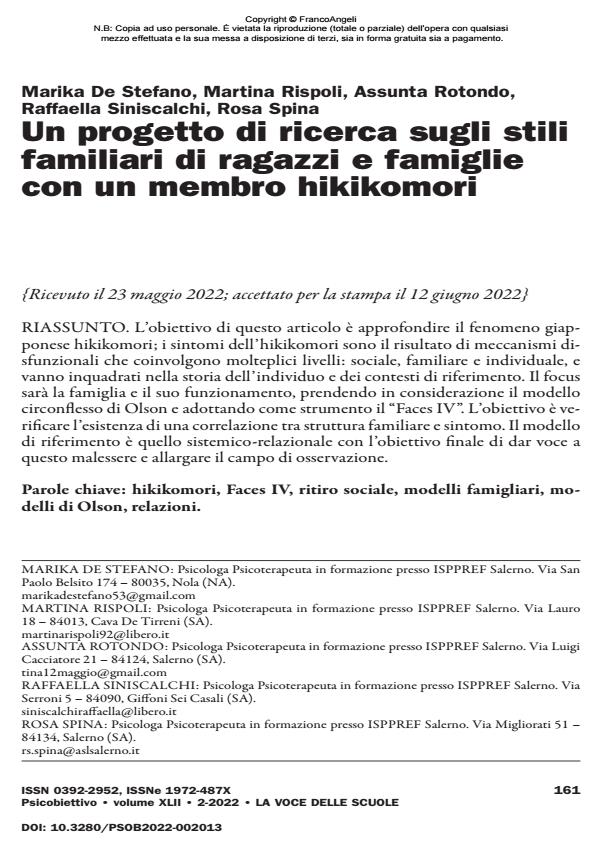Aa Research Project On The Family Lifestyle Of Children And Hikikomori Membered Families
Journal title PSICOBIETTIVO
Author/s Marika De Stefano, Martina Rispoli, Assunta Rotondo, Raffaella Siniscalchi, Rosa Spina
Publishing Year 2022 Issue 2022/2
Language Italian Pages 10 P. 161-170 File size 618 KB
DOI 10.3280/PSOB2022-002013
DOI is like a bar code for intellectual property: to have more infomation
click here
Below, you can see the article first page
If you want to buy this article in PDF format, you can do it, following the instructions to buy download credits

FrancoAngeli is member of Publishers International Linking Association, Inc (PILA), a not-for-profit association which run the CrossRef service enabling links to and from online scholarly content.
The goal of this article is to investigate the Japanese phenomenon hikikomori. The symptoms of hikikomori are the result of dysfunctional mechanisms involving multiple levels: social, domestic and individual, and have to be framed in the individual history and framework contexts. Focus will be on the family and its functioning, taking in account Olson’s circumflexed model and using "Faces IV" as a tool. The objective is to verify the existence of correlation between family structure and symptom. The reference model is the systemic-relational one, with the ultimate goal of giving voice to the malaise experienced and broadening the observation field.
Keywords: hikikomori, Faces IV, social withdrawal, family models, Olson’s models, relationship
Marika De Stefano, Martina Rispoli, Assunta Rotondo, Raffaella Siniscalchi, Rosa Spina, Un progetto di ricerca sugli stili familiari di ragazzi e famiglie con un membro hikikomori in "PSICOBIETTIVO" 2/2022, pp 161-170, DOI: 10.3280/PSOB2022-002013